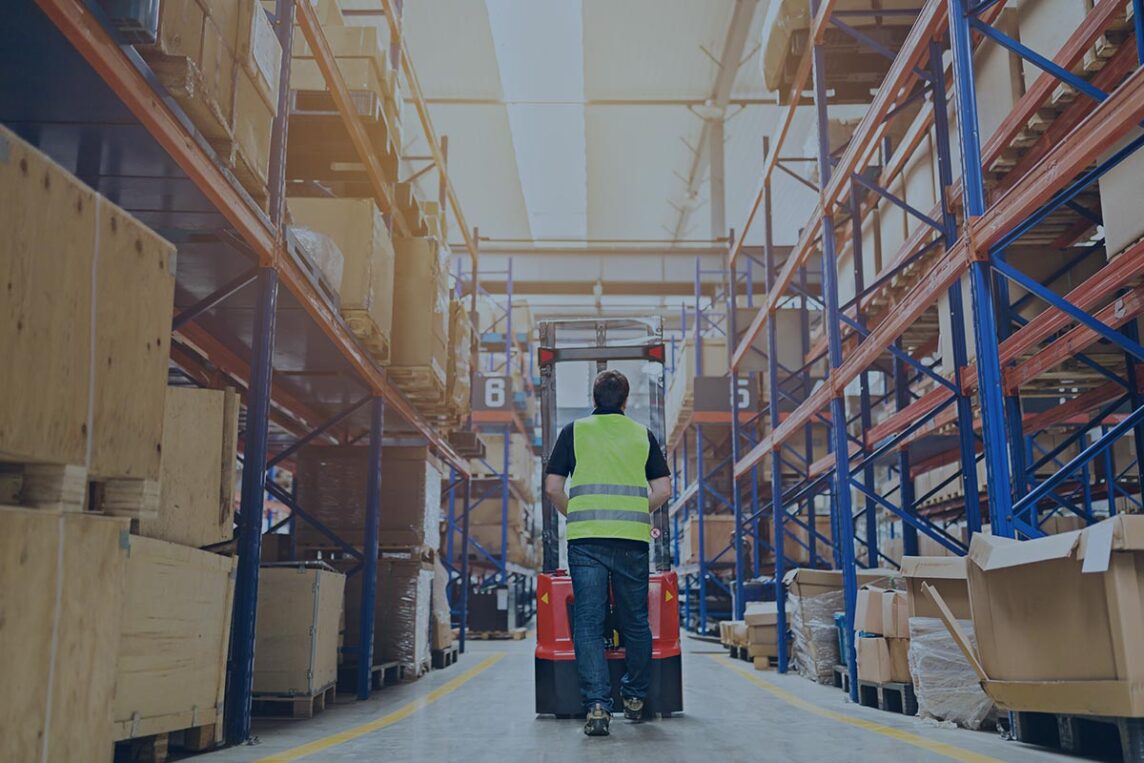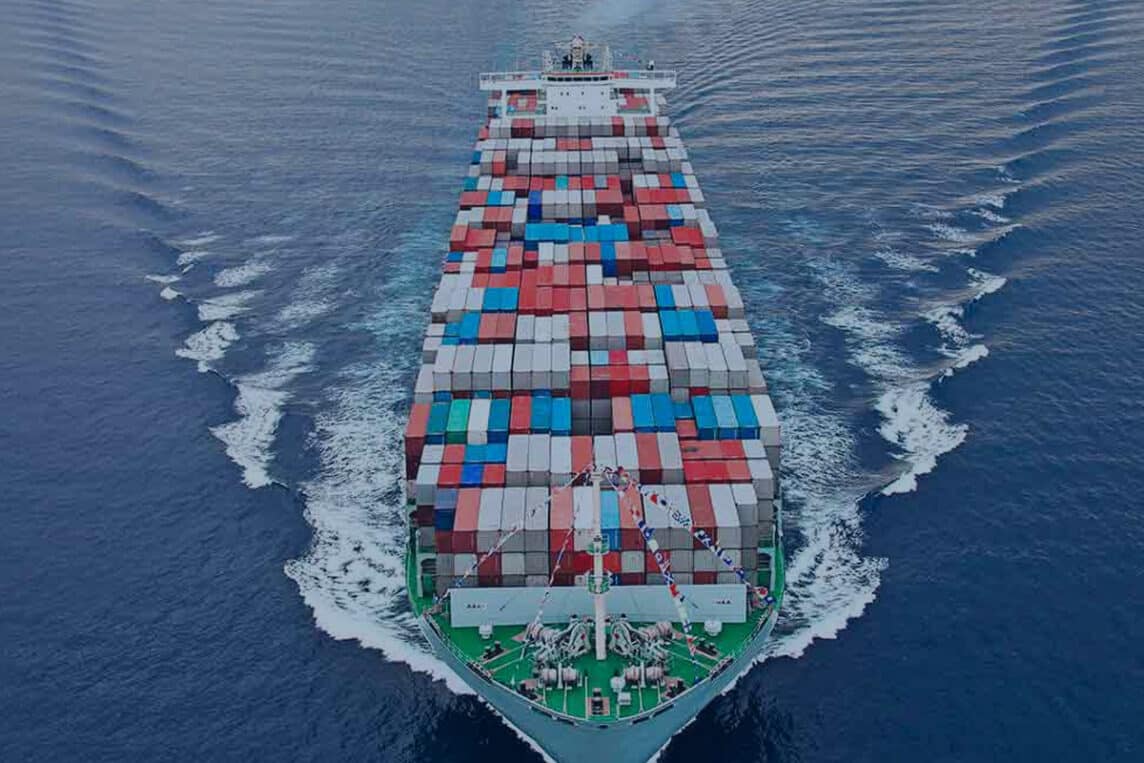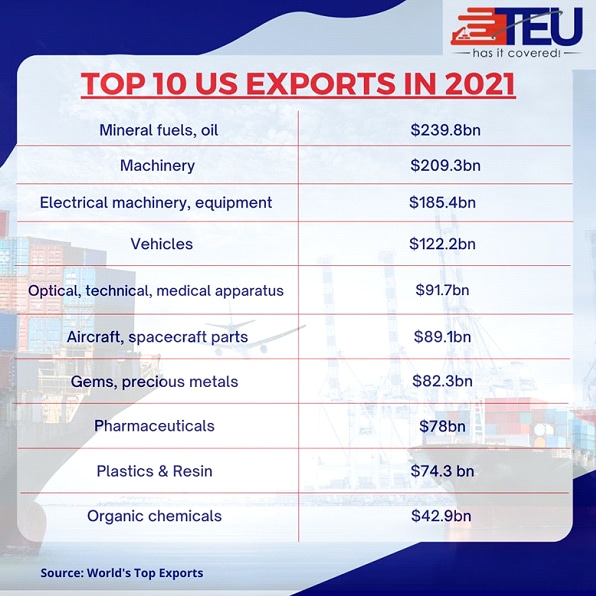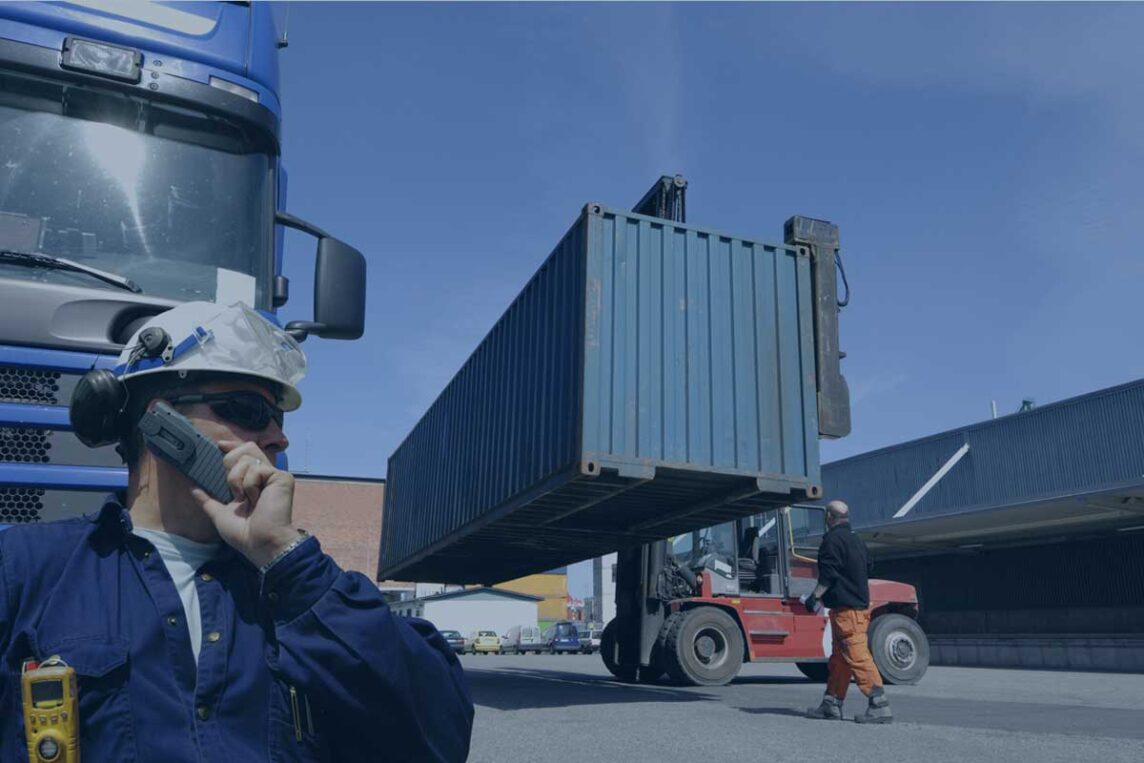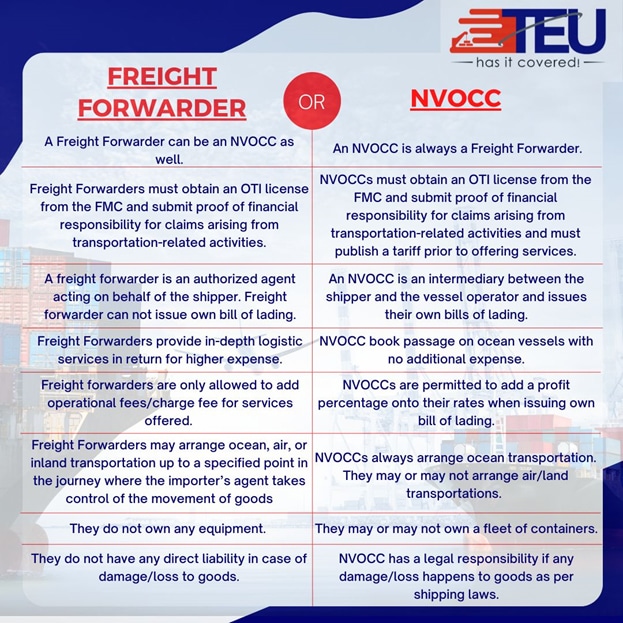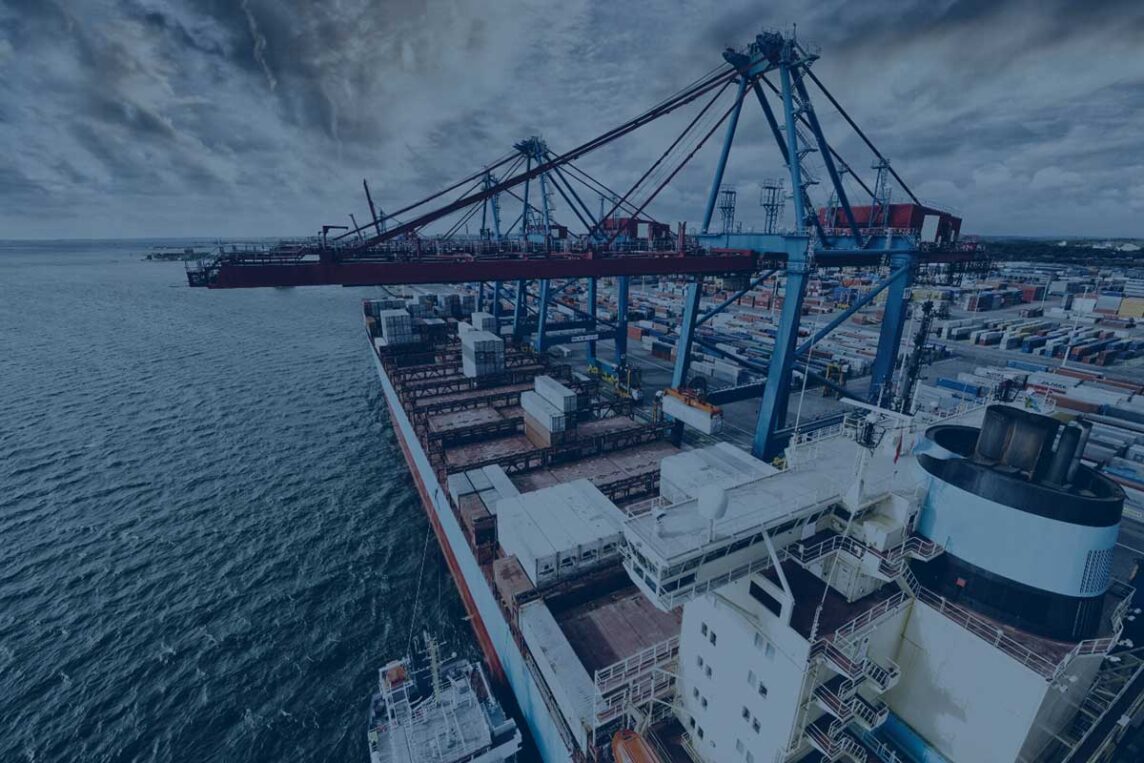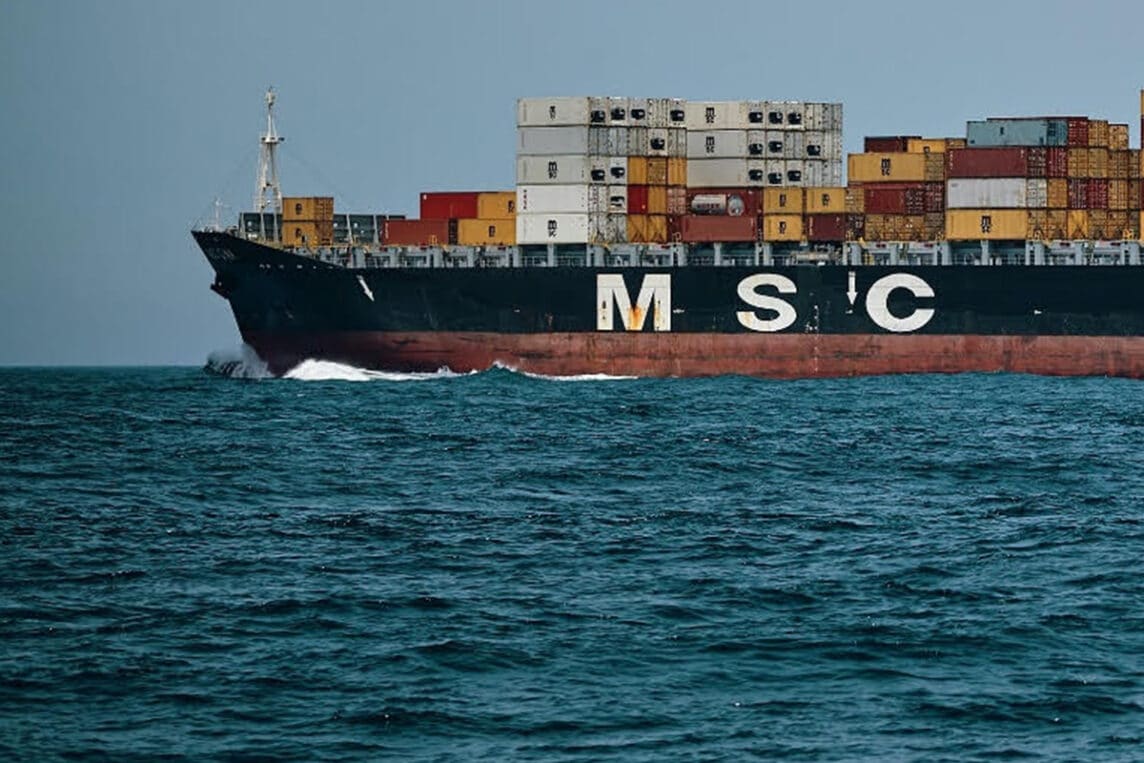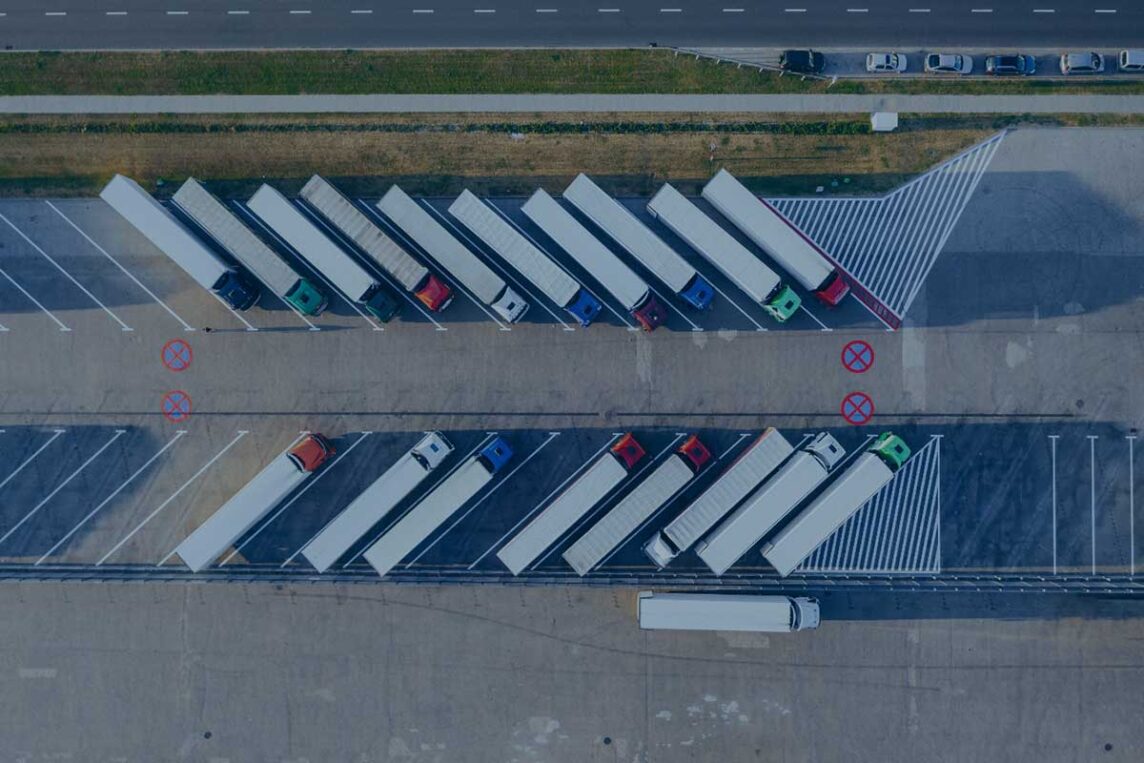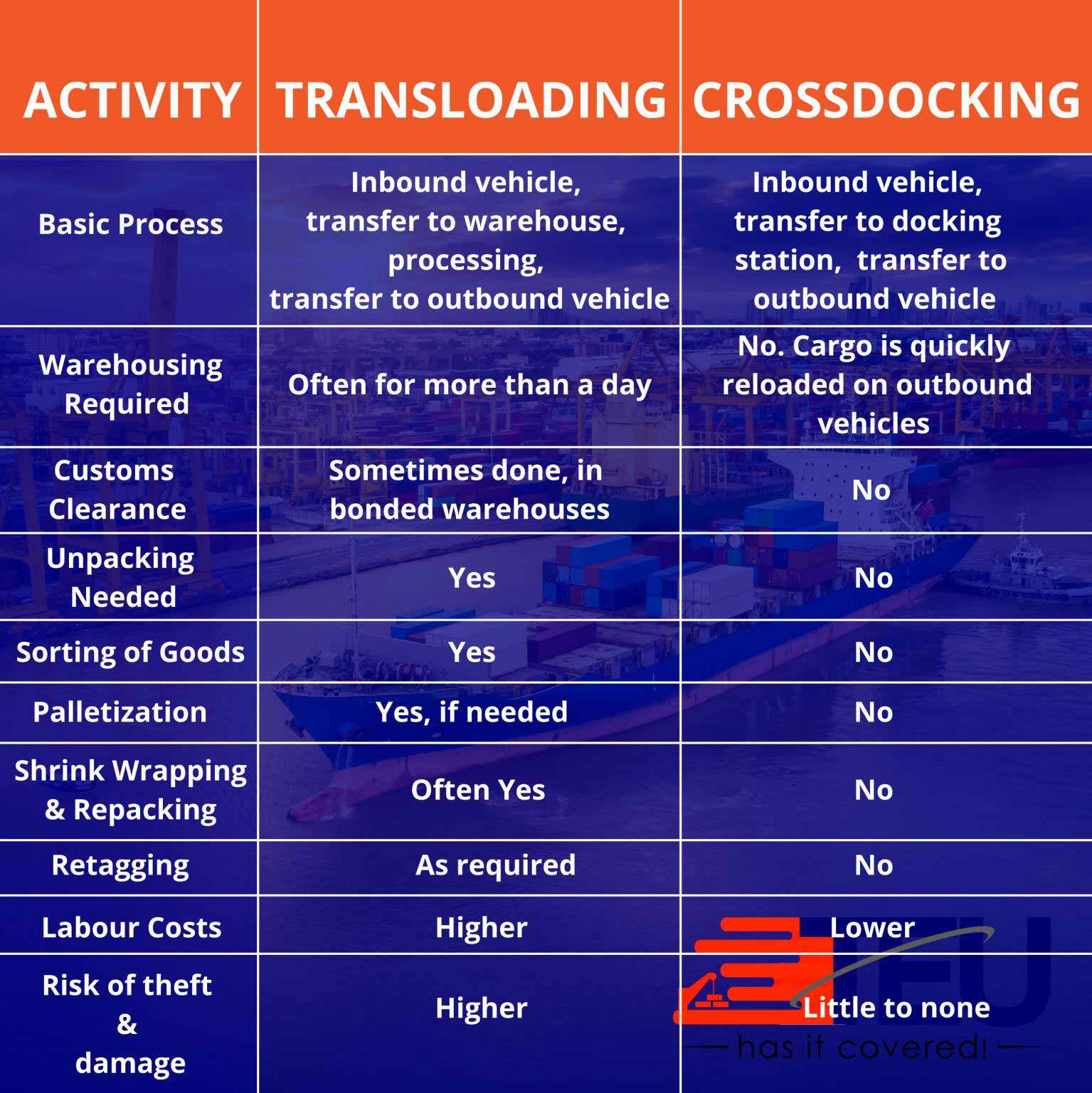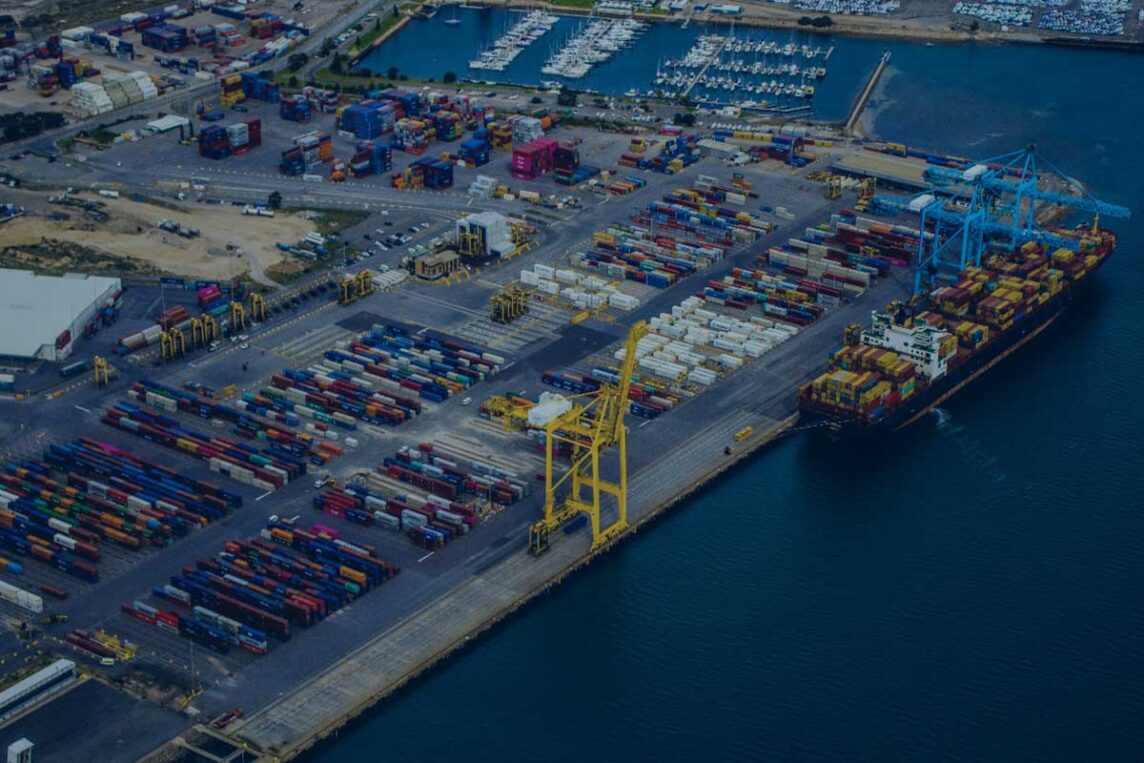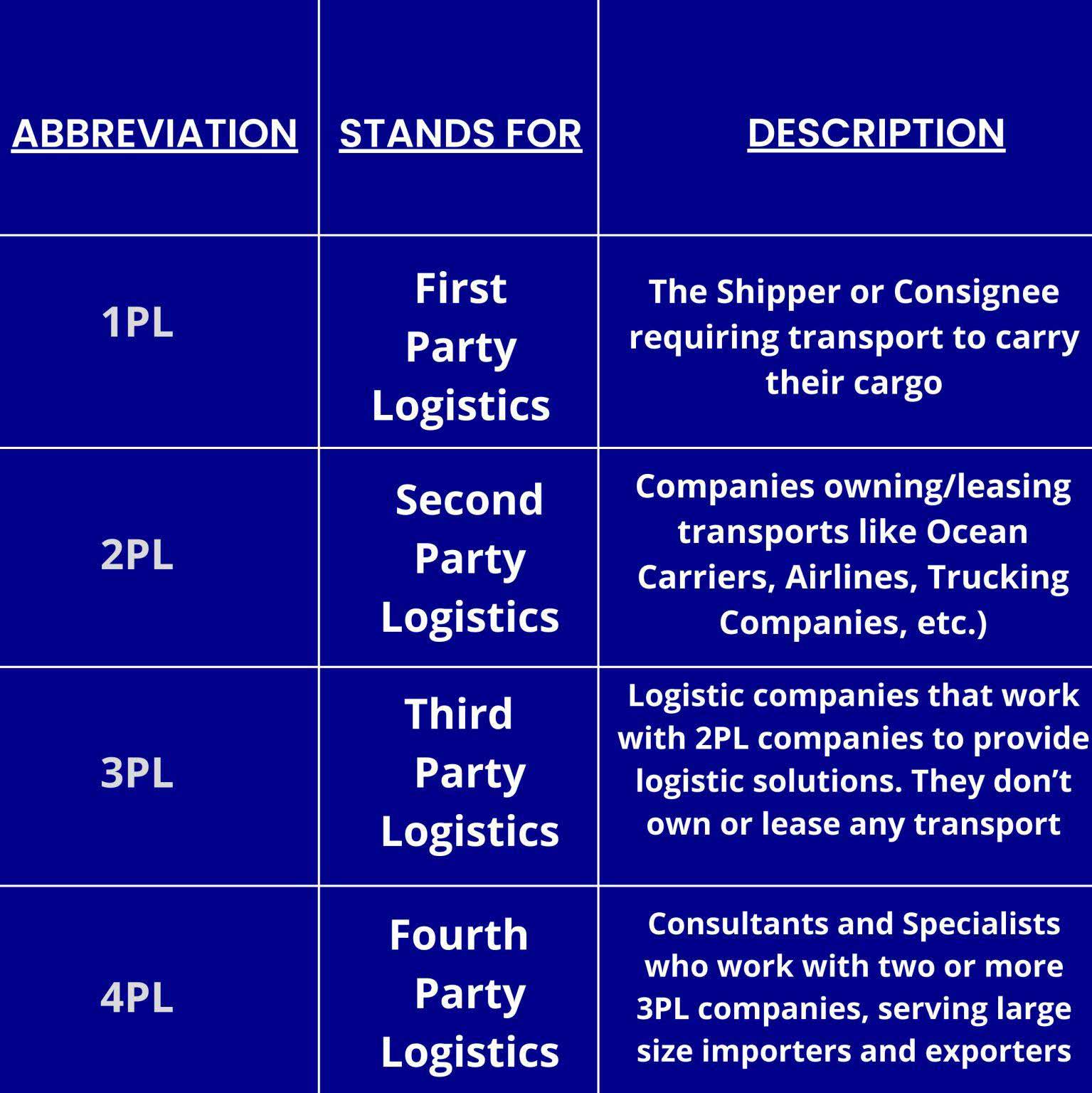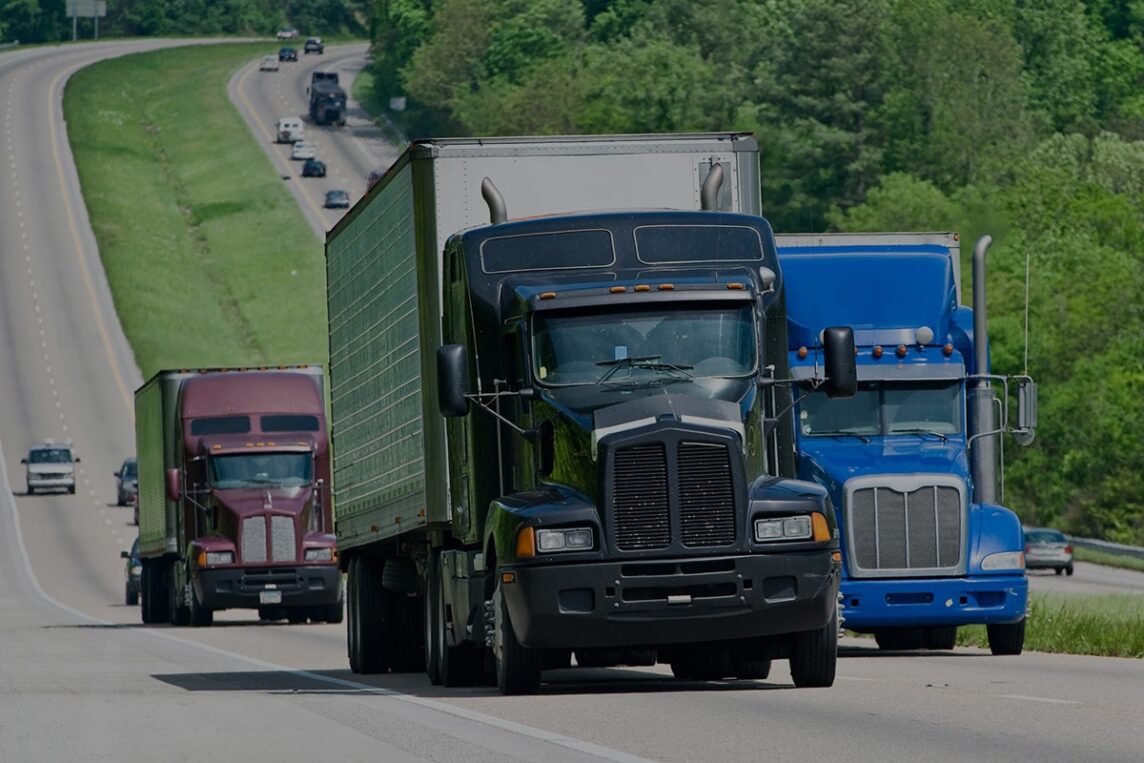Warehousing is the process of storing physical inventory for sale or distribution.
The following infographic breaks down the functions of warehousing process for easier understanding.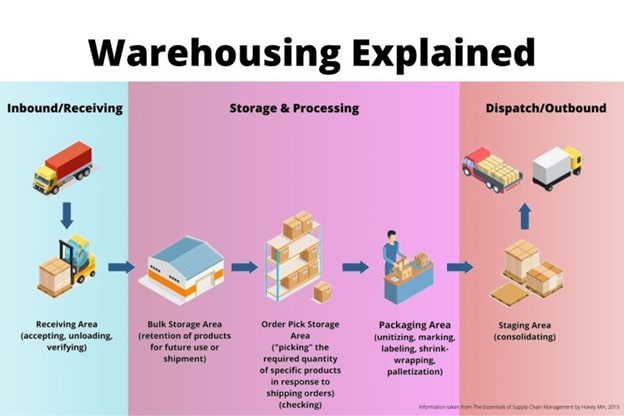
Warehousing Explained
Worldwide Inflation Due to Ukraine War
The Ukraine war has dealt a major blow to the commodity markets, causing a disruption in the production and the trade of several commodities, which both Russia and the Ukraine are key exporters of. The war has caused, the already pandemic struck market, to face yet another significant increase in prices and supply constraints.
Below is a table showing the price hike of the commodities:
OVER THE ROAD WEIGHT LIMITS
FOR CONTAINERS ON WHEELS
Accident damage risks faced by the cargo can be insurance wrapped, but not when weight of the Container trucks exceeds the maximum stipulated by the State authorities in the United States. When the loaded truck’s weight exceeds the maximum allowed, there will not be just fines but also delays and costs for the shipper.
Introduction
The following are the major parts of regulations for on-the-road, container loaded trucks in the USA:
- Restrictions on maximum (A) load weight of the container truck
- Restrictions on maximum (B) Gross Weight of the truck, including the weight of container
- Restrictions on maximum (C) weight Per Axle and per Tandem-Axles of the container loaded truck
This blog is on the first element, but let us understand what is meant by A, B and C above with a pictorial example:
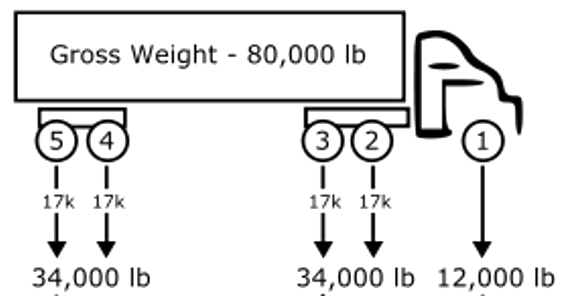 In the above case, A = 34,000 + 34,000 = 68,000 lbs, which is the total load weight of the container truck. It is easy to notice that total load weight includes the weight of the truck’s chasses and tires.
In the above case, A = 34,000 + 34,000 = 68,000 lbs, which is the total load weight of the container truck. It is easy to notice that total load weight includes the weight of the truck’s chasses and tires.
B = 80,000 lbs, which is the total weight of the whole truck, which includes both the load (68,000 lbs) and the prime mover (12,000 lbs).
and C = 34,000lbs, which is the weight on Tandem Axle 2+3, which is also equal to the weight on Tandem Axle 4+5. If the two weights are equal, it means the weight inside the container has been evenly distributed.
To be sure, this blog is about the maximum weight of the load on the truck, as depicted by “A” and also the maximum weight on any axle or tandem axle, as shown in “C”.
Why It Is Important?
It is worth a mention here that these weight restrictions are meant to avoid both accidents and road damage. When the imported or an export-bound container is on road in the United States, the shipper must know its risk exposure to accident damages and State fines related with excess weight of the container truck’s load. Accident damage risks faced by the cargo can be insurance wrapped by the shipper, but not when weight of the load exceeds the maximum stipulated by the State authorities.
Ultimate Onus
When a trucking company is called in to pick a loaded container from the port or the warehouse, an experienced freight forwarder expects the trucker to ask and verify two factors; the total weight of the container and its even distribution. If the trucking company does not bother asking and/or verifying about it, it is probably best to avoid engaging this trucker. Next, if your freight forwarder does not ask you about it, then it is best to avoid this freight forwarder too.
The whole responsibility, and ensuing costs, belong to the shipper to ensure that the container is evenly loaded and the container weight does not make the truck’s load exceed the maximum weight limit allowed by the States through which the truck will travel. Having said that, generally all shipments moving in and out of terminals are weighed, interchange reports are issued at respective times. All truckers notify their freight forwarders at particular time if shipment is over-weight.
Container Weight Restrictions
First, the reader must know that a valid Container Safety Convention (CSC) plate on the container specifies the maximum weight of the loaded container and if exceeded, the containers will likely not be accepted by the shipping line. This loaded container’s max weight mentioned on the CSC is not the same as on-the-road maximum allowed weight of the container-on-wheels, in both the origin and destination countries. Another important thing, , it is not mentioned on the CSC plate that the cargo weight is to be evenly distributed inside the container.
In the United States, there are maximum load limits for container trucks. Along with these weight limits, there are bridge laws which restrict the spacing and maximum weight on axle groupings.
The Tables
Here are two tables on max container-on-wheels weights as allowed in different States of USA, with glossary of terms used at the end, but contact TEU Global (www.teuinc.com) at info@teuinc.com, or call us at +1 732-515-9040; if there is any specific query or more information is sought.
United States – ZONE A
|
Zone A Includes Arizona – Iowa – Nebraska – Oregon – Arkansas – Kansas – Nevada – Rhode Island – California – Kentucky – New Hampshire – South Dakota – Colorado – Maine – New Jersey – Texas – Connecticut – Massachusetts – New Mexico – Utah – District of Columbia – Michigan – New York – Vermont – Idaho – Minnesota – North Dakota – Washington – Illinois – Missouri – Ohio – Wisconsin – Indiana – Montana – Oklahoma – Wyoming – West Virginia |
|||||||
| Load Type | Length | Truck Type | Weight Limits | Weight Limit Exceptions | Weight Limit Exceptions | Weight Limit Exceptions | Weight Limit Exceptions |
| DC/HC/OT/FR | 20 Feet | Without Tri-Axle | 38,000lbs | Illinois 34,000lbs | California 36,500lbs | ||
| 20 Feet | With Tri-Axle | 44,000lbs | |||||
| 40 Feet | 44,000lbs | Missouri 43,000lbs | Illinois 43,000lbs | ||||
| RF/RH | 20 Feet | Without Tri-Axle | 34,000lbs | California 32,000lbs | Illinois 32,000lbs | Indiana 32,000lbs | Wisconsin 32,000lbs |
| 20 Feet | With Tri-Axle | 41,000lbs | California 38,000lbs | Illinois 38,000lbs | Indiana 38,000lbs | Wisconsin 38,000lbs | |
| 40 Feet | 41,000lbs | California 39,000lbs | Illinois 39,000lbs | Indiana 39,000lbs | Wisconsin 39,000lbs | ||
United States – ZONE B
|
Zone B Includes Includes Alabama – Maryland – Tennessee – Delaware – Mississippi – Virginia – Florida – North Carolina – Georgia – Pennsylvania – Louisiana – South Carolina |
||||||
| Load Type | Length | Truck Type | Weight Limits | With Permits | Weight Limit Exceptions | Weight Limit Exceptions |
| DC/HC/OT/FR | 20 Feet | Without Tri-Axle | 38,000lbs | |||
| 20 Feet | With Tri-Axle | 44,000lbs | 46,000lbs | South Carolina 43,000lbs, with Permit 45,000lbs | Tennessee 42,000lbs, with Permit 45,000lbs | |
| 40 Feet | 44,000lbs | 51,000lbs | ||||
| RF/RH | 20 Feet | Without Tri-Axle | 34,000lbs | |||
| 20 Feet | With Tri-Axle | 40,000lbs | 34,000lbs | |||
| 40 Feet | 41,000lbs | 43,000lbs | ||||
In the first column of both tables, following abbreviations were used:
DC = Dry Cargo, the standard shipping container used for dry cargo. Made from steel, it is predominantly in 20′ or 40′ lengths and has loading doors at one end.
HC = High Cube, a container that is 9’6″ high instead of the standard 8’6″ high
OT = Open Top, a dry cargo container without a solid roof. Over-height cargo and heavy machinery can be loaded from above and a weatherproof tarpaulin is fitted over the top FR = Flat Rack, a heavy-duty container “base” used for carrying bulky or heavy cargoes. Fitted with end frames which are either fixed or folding and which constitute the corner posts for lifting and stacking
RF = Refrigerated container, normal
RH = Refrigerated container, High Cube
Important Notes
3rd and 4th Columns: They show which truck is more suitable for the 20 feet container. A tri-axle truck is more costly but the shipper might need it, considering the slightly excessive container weight.
5th and remaining columns: These show the States that have different max weight restrictions and permits.
FDA PROCESS – ENTRY REVIEWS AND EXAMS
The products imported into United States that require FDA compliance include human and animal food and medicines, medical devices, tobacco products, cosmetics and electronic products that emit radiations. When the import entries are filed by the CBP authorized customs broker, the FDA staff might select the cargo for examination and sampling.
 The US Government’s Food & Drugs Administration collects samples and conducts examinations to verify if certain imported products are compliant with the FDA regulations and laws. The imported products that require FDA compliance include human and animal food and medicines, medical devices, tobacco products, cosmetics and electronic products that emit radiations.
The US Government’s Food & Drugs Administration collects samples and conducts examinations to verify if certain imported products are compliant with the FDA regulations and laws. The imported products that require FDA compliance include human and animal food and medicines, medical devices, tobacco products, cosmetics and electronic products that emit radiations.
FDA REVIEW PROCESS
 During the review of the import entries filed by the authorized customs brokers, FDA may decide to inspect the cargo and an FDA exam is notified to the importer so the latter could share the cargo location for FDA inspectors to visit and examine. This is where the recommended reasonable distance from port of entry comes in (ON EXPECTING DELAYS FROM FDA REVIEW) as FDA staff of that area must physically come to the location to examine. If the cargo has been stored further away, FDA may ask for its relocation closer to or at the port.
During the review of the import entries filed by the authorized customs brokers, FDA may decide to inspect the cargo and an FDA exam is notified to the importer so the latter could share the cargo location for FDA inspectors to visit and examine. This is where the recommended reasonable distance from port of entry comes in (ON EXPECTING DELAYS FROM FDA REVIEW) as FDA staff of that area must physically come to the location to examine. If the cargo has been stored further away, FDA may ask for its relocation closer to or at the port.
FDA examination can be of different kinds such as:
- Label Examination
- Field Examination
- Sample Collection
Label Examination:
In label examination, a member of FDA’s compliance staff reviews the labels or labelling of the products to see if it complies with the labeling requirements. Labeling requirements vary based on whether the product is a cosmetic, drug, food product or a medical device. The Shippers importing into United States goods that are subject to FDA approval must follow the labeling regulations that are specific to the product.
Field Examination:
Savvy importers keep these possible delays and costs in mind when chalking out their schedules, so they have more time before an order is due and arrangements made for storage if need be. Another good practice is to not only be aware of these possibilities but communicate them with your buyers in advance so they can plan accordingly as well.
During a field exam, physical inspection is performed on the imported product and is used to determine various things including but not limited to:
- Quantity observed does not match the quantity declared on shipping documents
- In transit or storage damage
- Inadequate storage temperature conditions
- Rodent or insect activity
- Field tests for lead in ceramic ware
- Non-permitted food and color additives
- Product integrity, uncharacteristic odors, or spoilage
- Other questionable conditions/practices
Sample Collection:
During the Field Examination, FDA can collect samples of the product to determine whether it meets public health standards. FDA investigators are trained in sampling strategies and techniques to collect samples that are representative of the product being imported and can support a final admissibility determination. The samples are sent to an FDA laboratory for analysis. The results can and do take time (sometimes months) and the product cannot be distributed or sold until results have been reviewed and final admissibility has been determined.
Product Selection for Examination & Sampling
Not every FDA regulated imported product is selected for examination and sampling. Some of the reasons for FDA selecting a cargo for examination and sampling include risk associated with the product; past violations in that product category; past violations by the manufacturer, shipper, importer; and routine surveillance.
When FDA selects the imported cargo for examination and sampling, it will notify why the shipment is being held, what needs to be done and who to contact.
If you want to learn more or have specific queries related to FDA processes, drop TEU Global (www.teuinc.com) an email at import@teuinc.com , or call us at +1 732-515-9040.
